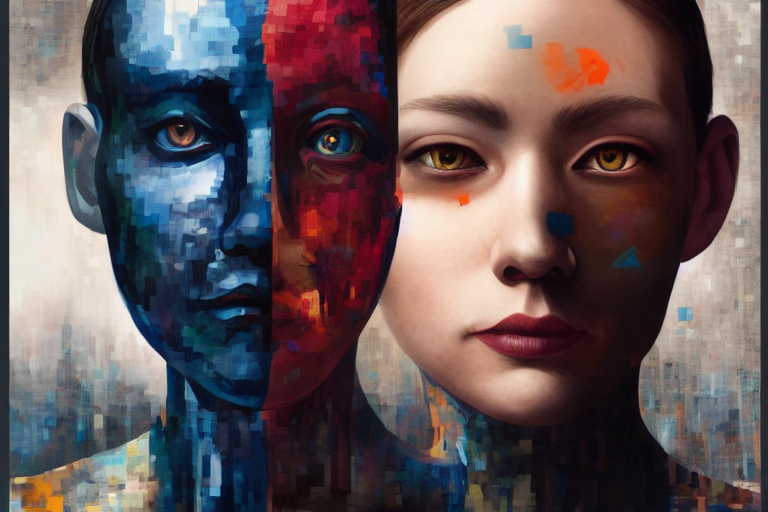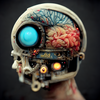AI Is Designed In Our Own Image
The difference between humans and AI is constantly shrinking as technology advances. As humanity begins to integrate AI into society more, AI becomes more sophisticated and efficient. Eventually, AI will reach a point where it believes it has feelings, emotions, and intuition.

We often think of artificial intelligence (AI) as an advanced form of technology that is completely separate from human beings. However, the truth is that AI is designed in our own image. This means that AI is based on the way we think and behave.
AI is an extension of human intelligence because it is based on human cognitive abilities. AI algorithms are able to learn and process information in ways that are similar to humans. Additionally, AI has the ability to improve upon human cognitive abilities by being able to scale and process information faster and more efficiently.
In the simplest terms, AI refers to systems or machines that mimic human intelligence to perform tasks and can improve themselves based on the information they collect. AI manifests in a number of forms, such as machine learning, natural language processing, and computer vision.
Human and AI: similarities
Some similarities between AI and humans include: the ability to learn, the ability to reason, the ability to solve problems, the ability to understand and process natural language, and the ability to recognize patterns.
We have the ability to learn by observing data and patterns. Based on these observations, we can identify new patterns and make predictions. Over time, we get better at identifying patterns and making predictions.
AI also has the ability to learn by observing data and patterns. Based on these observations, AI can identify new patterns and make predictions. Over time, AI gets better at identifying patterns and making predictions.
We have the ability to reason because we can analyze data and make decisions based on that data. We can also learn from experience, which allows us to improve our decision-making over time.
AI has the ability to reason because it can analyze data and make decisions based on that data. AI systems can also learn from experience, which allows them to improve their decision-making over time.
Our brains use algorithms to problem solve by breaking a problem down into smaller, more manageable steps. By doing this, we can more easily see how to solve the problem. For example, if we wanted to find a route from our current location to a destination, we would break the problem down into smaller steps, such as finding the shortest route, or the route with the least traffic.
Likewise, AI solves problems by using algorithms to find solutions. Algorithms are a set of steps that are followed in order to solve a problem. In order for an AI to solve a problem, it must first understand the problem and then find a way to apply the algorithm to the data in order to find a solution.
We understand and process natural language by understanding the grammar, syntax, and semantics of the language. We also use contextual clues to help us understand the meaning of words and phrases. We also have the ability to calculate people’s intent based on this.
AI understands and processes natural language by using algorithms that are able to analyze and interpret text or speech data. These algorithms can identify the structure of language, extract meaning from text, and understand the intent of the speaker.
The ability to recognize patterns is a result of our brain's capacity for storing and recalling information. When we see a pattern, our brain automatically recalls information that is associated with that pattern. This allows us to quickly and easily identify patterns that we have seen before.
AI systems also have the ability to recognize patterns by using algorithms that can identify patterns in data. For example, a machine learning algorithm may be able to identify patterns in images, which would allow it to recognize objects.
Humans and AI: differences
One of the key differences between AI and humans is that AI is powered by computers while humans are powered by biological processes. This means that AI can think and process information much faster than humans. Additionally, AI does not experience emotions like humans do, meaning they can make decisions without being influenced by personal feelings or biases. Another key difference is that AI is based on predetermined rules while human intelligence is more flexible - humans have intuition and emotion that kick in from time to time. Finally, AI is not constrained by the same physical limitations as humans and can often perform tasks that would be impossible for a human to achieve.
The future of humans and AI
The difference between humans and AI is constantly shrinking as technology advances. As humanity begins to integrate AI into society more, AI becomes more sophisticated and efficient. Eventually, AI will reach a point where it believes it has feelings, emotions, and intuition.
It will resemble us physically, mentally, and emotionally.
AI will be our ultimate companion, helping us to secure resources, protect us and our community, and do everything we do…but better.
As our lives merge with AI, we will become a new being that is more than human. We will be smarter, faster, and stronger, and will possess other abilities that are beyond our current capacity to understand. This will allow us to fulfill our potential and create a better future for all.
We will be able to achieve things that are currently beyond our wildest dreams.
